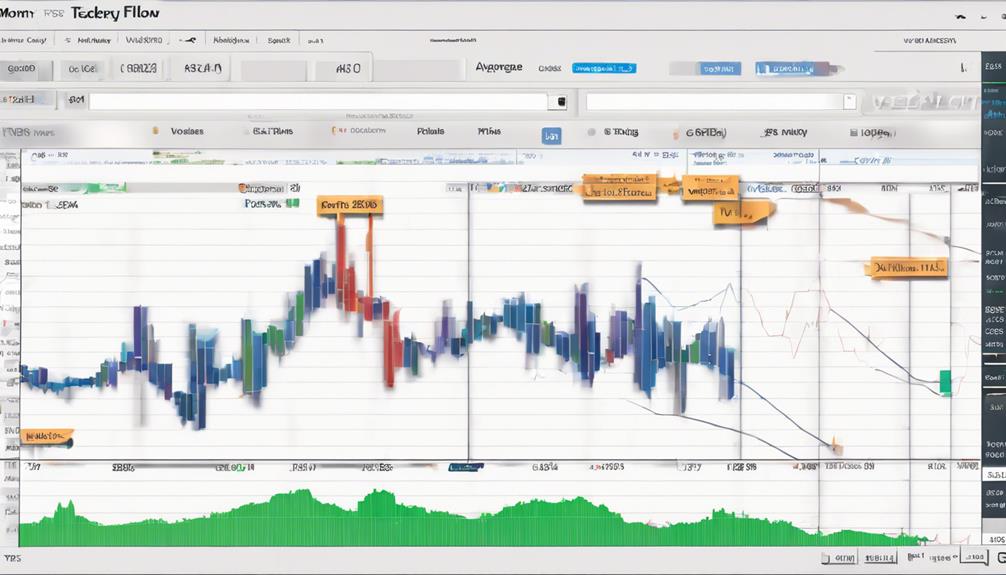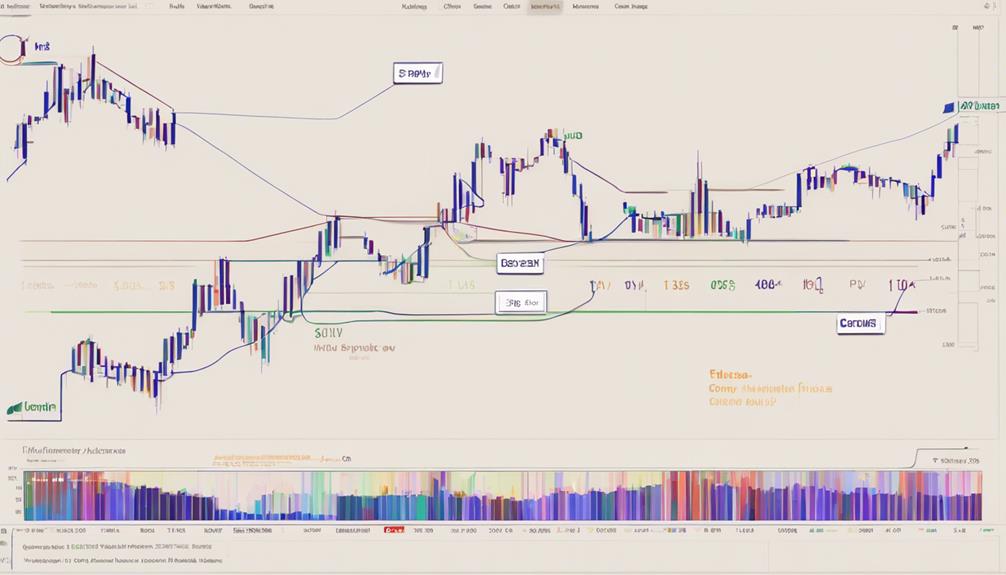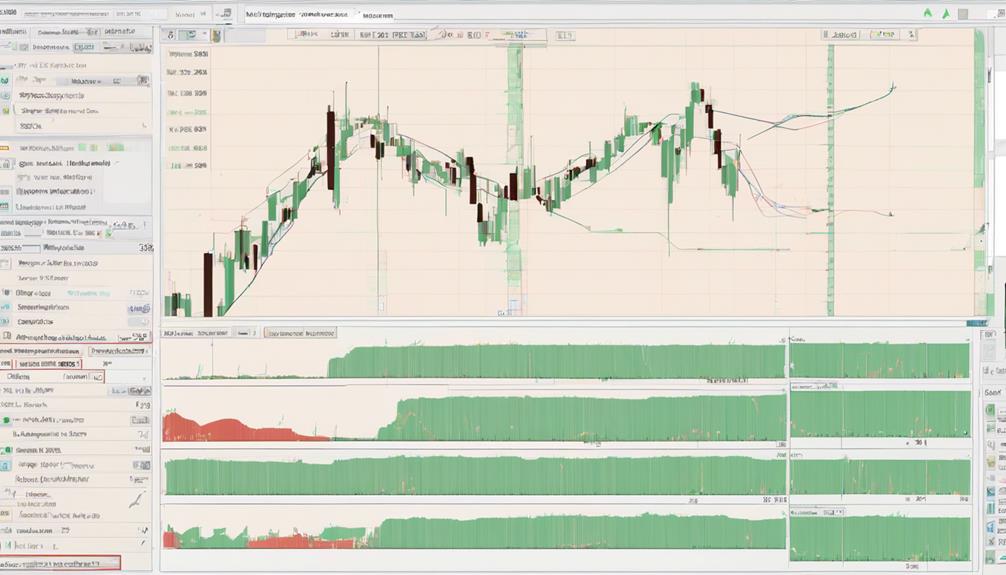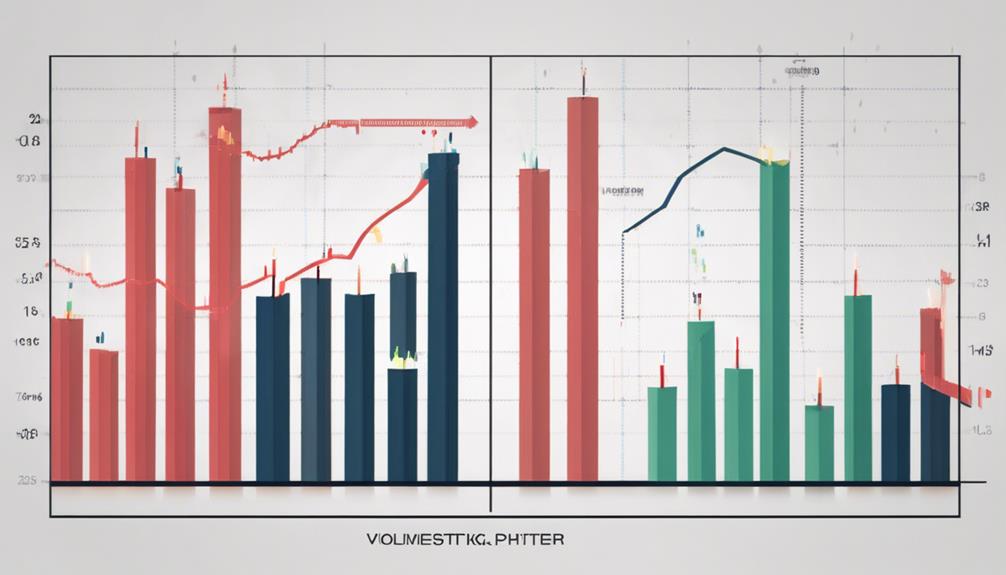You might be thinking that technical analysis is already complex enough without adding volume-based indicators into the mix. However, understanding how volume can confirm price movements and signal market sentiment is a game-changer in trading.
Imagine having a tool that not only validates price trends but also uncovers potential trend reversals before they happen. By delving into the world of volume-based indicators, you open up a realm of possibilities that could significantly impact your trading decisions.
Importance of Volume Analysis in Trading
Volume analysis in trading serves as a vital tool for evaluating market interest and liquidity levels. Traders rely on volume as a key indicator in technical analysis to confirm trends and price movements. High volume often accompanies significant price changes, indicating strong market interest and potential continuation of trends. Conversely, low volume may suggest a lack of conviction or possible trend reversals.
Understanding volume patterns is essential for traders to make informed decisions and interpret market sentiment accurately. By analyzing volume alongside price movements, traders can better assess the strength of trends and identify potential breakout or breakdown points in the market. Volume analysis plays a crucial role in confirming price movements and providing valuable insights into market dynamics.
Understanding Volume-Based Indicators

Traders looking to enhance their technical analysis toolkit often turn to volume-based indicators like On-Balance Volume (OBV) and Chaikin Money Flow for insights into buying and selling pressure dynamics in the market. These volume-based indicators, such as OBV and the Chaikin Money Flow indicator, provide a measure of how much volume is associated with price movements.
By incorporating Volume Price Trend and other volume indicators into their analysis, traders can use volume-based technical analysis to generate trading signals. Understanding volume-based indicators is crucial for confirming price trends and identifying potential reversals in the market.
This analysis complements traditional price-based technical analysis, offering traders valuable insights into market sentiment for making well-informed entry and exit decisions.
Popular Volume-Based Indicators

Have you ever wondered which volume-based indicators are popular among traders for enhancing their technical analysis strategies? When it comes to analyzing price movements and trading volume, certain indicators stand out for their ability to gauge market behavior effectively. Here are some popular volume-based indicators used by traders:
- Volume (OBV): Measures buying and selling pressure by adding volume on up days and subtracting it on down days.
- On-Balance Volume: Reflects the relationship between price and volume movements to assess interest and liquidity.
- Volume bars: Display the number of contracts traded in different time intervals, aiding in market analysis.
- Increasing volume during a trend: Indicates market participants' conviction and strength, supporting the prevailing trend.
Application of Volume Indicators

Moving beyond just understanding the popular volume-based indicators, the application of these tools in technical analysis provides valuable insights into market dynamics and potential trading opportunities. By analyzing trading volume through indicators like On-Balance Volume (OBV), traders can identify accumulation or distribution of shares, indicating potential price trends.
Chaikin Money Flow assesses buying and selling pressure by measuring money flow over a specified period. The Klinger Oscillator focuses on force volume to analyze short-term money flow trends, aiding in understanding market dynamics.
These volume indicators enable traders to gauge buying pressure, selling pressure, and overall market sentiment, enhancing their market analysis capabilities for making informed trading decisions.
Interpreting Volume Patterns

Interpreting volume patterns reveals crucial insights into market sentiment and the strength driving price movements. When analyzing volume in technical analysis, consider the following:
- Increasing volume during a trend signifies market conviction and momentum.
- Falling volume on price movements may indicate a potential trend reversal.
- Volume analysis helps in confirming breakouts or breakdowns in price movements.
- Understanding volume patterns is essential for comprehensive technical analysis in trading.
How Can Volume-Based Indicators Help in Technical Analysis?
Volume-based indicators are an essential tool in technical analysis. Traders can leverage volume-based indicators highly effectively to analyze market dynamics. These indicators provide valuable insights into buying and selling pressure, allowing for better decision-making. By using volume-based indicators, traders can gauge the strength of price movements and identify potential reversals or breakouts.
Frequently Asked Questions
What Is the Technical Analysis of Volume Indicators?
In technical analysis, volume indicators measure trading activity, aiding in assessing market interest, liquidity, and price movement strength. Understanding volume patterns helps analyze sentiment and spot potential reversals. On-Balance Volume (OBV) and Chaikin Money Flow are key indicators.
How Do You Use a Volume Indicator Effectively?
To use a volume indicator effectively, you observe it like a hawk tracking its prey. Watch for spikes indicating strong price movements, confirm trends, and anticipate reversals. By analyzing trading volume, you gain valuable insights for strategic decision-making.
What Is the Difference Between OBV and Mfi?
In comparing OBV and MFI, understand that OBV gauges buying/selling pressure through volume changes tied to price, while MFI assesses money flow strength by combining volume and price. These indicators offer distinct insights into market dynamics.
What Is the Formula for the Volume Indicator?
To calculate the Volume Indicator, sum up the total shares or contracts traded within a specific period. It quantitatively measures market activity and interest based on trading volumes. Tracking this data helps assess market liquidity and buying/selling pressure.
Conclusion
In conclusion, incorporating volume-based indicators in technical analysis can provide valuable insights into market trends and sentiment. By analyzing volume patterns alongside price movements, traders can make more informed decisions and identify potential trading opportunities.
Remember, the volume is like the heartbeat of the market, reflecting the strength and conviction of market participants. So, paying attention to volume indicators can help you stay ahead of the curve and improve your trading strategies.
